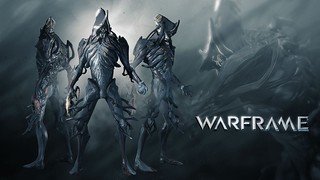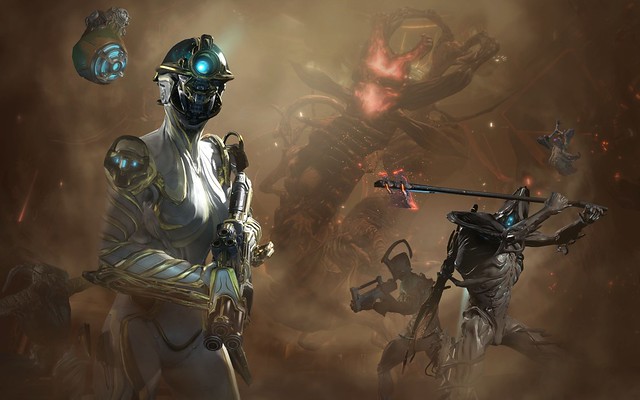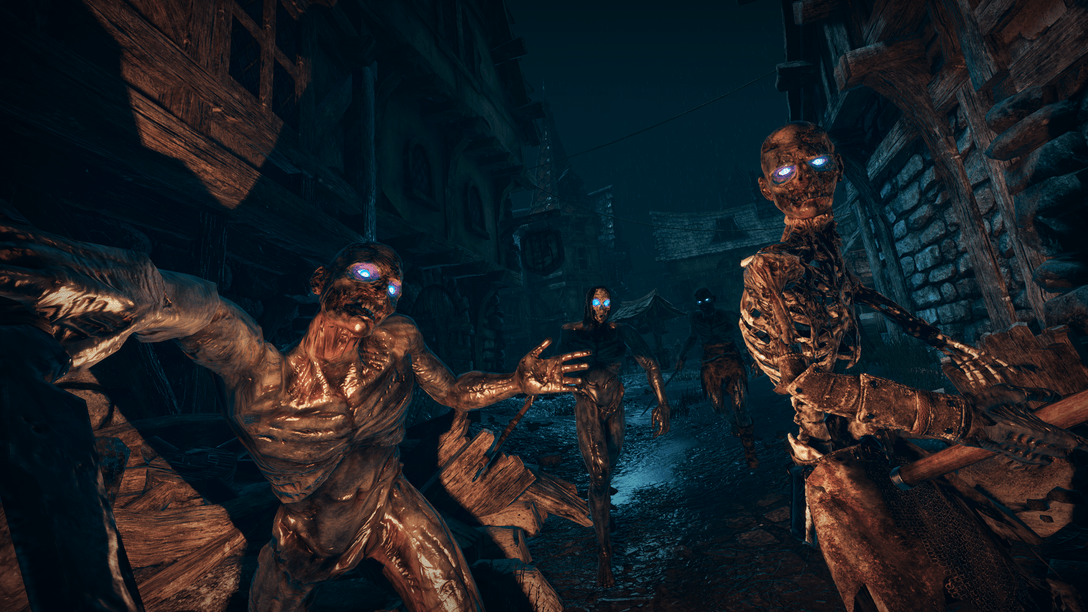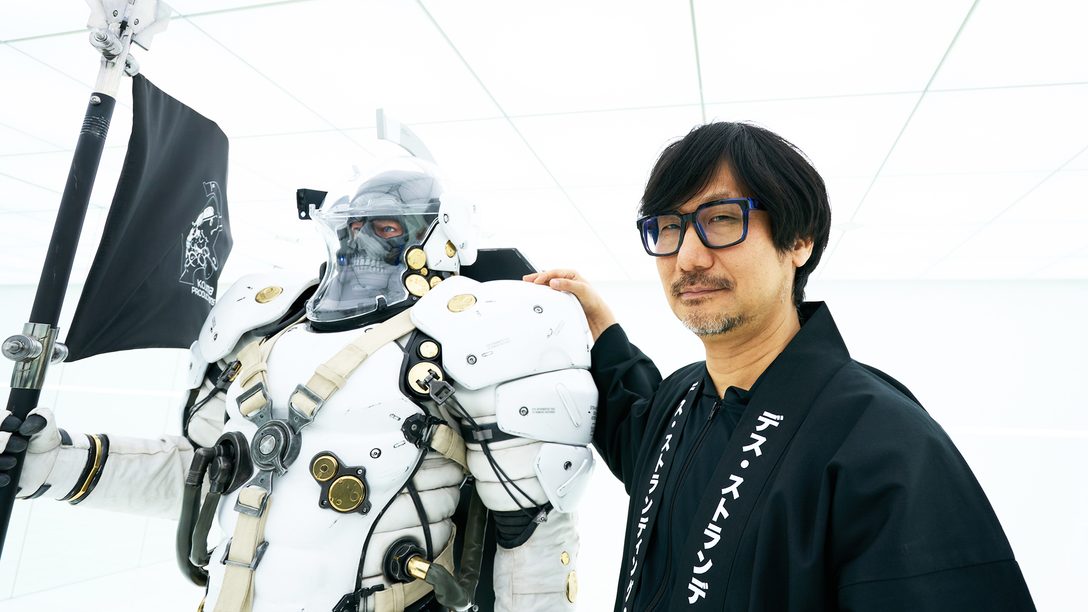
When you read the word “ninja,” what comes to mind? Exotic weaponry? Stealth and cunning? How about space-faring exo-armor and earth-shaking spells? These images all fit perfectly into Warframe, a fast-paced, third-person action game launching with PS4 on November 15th.
We wanted to know more about this free-to-play, multiplayer suite, so we sent some questions over to Digital Extremes to get a better grasp on the world of Warframe. Associate Producer Pat Kudirka took time out of his busy schedule to answer our inquiries, which we’ve listed below for your reading pleasure.
PlayStation.Blog: How would you describe Warframe to a newcomer in a single sentence?
Pat Kudirka: Space ninjas.
PSB: How has the team responded to working with PS4? What sort of opportunities, and challenges, come with the new platform?
Kudirka: Warframe is an original, self-published title from Digital Extremes. On previous titles we’ve always had a publisher, which was required to ship titles in the console market. This next generation of consoles, specifically PS4, allows independent developers like us to self-publish, without the traditional overhead costs that publishers usually shoulder when a game has to go on the shelf of a retail store.
It’s empowering and challenging at the same time. By bringing Warframe to PS4, we get to tap into the console market and share our awesome space ninja experience with players who prefer console gaming over PC gaming. The transition to the console has been fairly smooth thus far, much to the delight of our programming team. As with most new consoles and hardware, the challenge is always having the right information and proper tools to work with. Sony has done a great job providing these tools to the development community, and continues to support us leading up to launch.
PSB: Does Warframe use any of the DualShock 4’s technologies (touch pad, motion controls, light bar, speaker) that weren’t available with other control methods?
Kudirka: The DualShock 4 is a natural fit with Warframe’s fast-paced, third-person action. Upon entering a mission, the mysterious Lotus will brief you and your fellow Tenno through the speaker on the DualShock 4 controller, and update you as the mission goes on.
If your Warframe takes shield damage, the light bar will flicker blue and green and — once depleted — a red flicker of the light bar will indicate that your Warframe is losing health, so you better call for back-up from your co-op partners.
On top of that, each of the Warframe’s unique powers are mapped to the DualShock 4’s touch pad. If the player has enough energy available, a simple up, down, left, or right gesture on the touch pad will cast the Warframe’s special powers. This actually has been received quite well when focus testing, but there’s definitely more work to do on our end to ensure the feature is flawless.
PSB: Warframe combines a number of different art styles, cultures, and gaming conventions. How did this otherworldly fusion come about, and how does Digital Extremes find a harmony between them? How many ninja movies were viewed as reference material?
Kudirka: Traditional ninja mythology is already cool and interesting, but we needed to push that into the sci-fi realm and kind of forge our own kind of “Canadian manga,” for lack of a better term. We draw influence from anime, Arthurian legend, mythology, and you can probably see some evidence of mech fantasy, Power Rangers, and the whole cyber-ninja trope.
The gameplay follows the artistic influence by sticking to ninja themes of assassination, sabotage, and intrusion, while building an arsenal fit for space ninja commandos, including throwing stars, hunting bows, and all manner of firearms.
PSB: How long does it take, currently, to “max out” a single Warframe? What sort of play time has the team observed from its beta testers? How has the gaming community responded as a whole?
Kudirka: For the average free player, you’re looking at about 10 hours of play to max out your selected Warframe. All items in game, whether it be your Warframe, Sentinel, primary, secondary, or melee weapon, all gain XP individually and have specific Mods that can be applied to each. Depending on the player’s individual goals, the game experience isn’t over once you’ve maxed out your Warframe; there’s plenty more to build upon as we continuously add new weapons and Mods for customization.
We have players that have hundreds of hours logged, so we needed an upgrade/mod system that is very robust, hence why we changed our upgrade system to the current Mod System. We have a growing list of Mods that can be mixed and matched to modify weapons to whatever the player desires. The community was hesitant at first, but the Mod System is now very popular.
PSB: Given that the game is highly focused on cooperative play, what are some co-op behaviors and mechanics that separate Warframe from the pack?
Kudirka: Warframe strives on making the best co-operative experience for our players across the globe, and we believe this is what separates us from the rest. We’re always creating mission types, weekend events, and Warframes with co-op in mind.
Our Warframes have a lot of offensive powers, but we’re always focusing on powers that will complement our cooperative play as well. One example is our anti-matter Warframe, Nova, who was actually designed by our amazing community. Nova’s Worm Hole power allows her to shift the matter around her, creating a portal entrance and exit at a target location. Use this to teleport your co-op partners to places they generally couldn’t reach, providing tactical advantages in game modes like Defense. We have Warframes that can heal and provide energy to the team, teleport players in trouble, and much, much more. Co-op is a huge focus in Warframe, and will continue to be as we design more game modes and Warframes.
PSB: How does Digital Extremes balance free-to-play content with premium, paid-for content?
Kudirka: It’s been a challenge navigating this balance, and the interesting thing is that it was our paying players and founders that shaped the way we handled free versus paid-for. They were willing to pay and support our team at Digital Extremes, but didn’t want a pay wall separating them from players that chose not to pay.
Players can collect blueprints and materials in game, take them to the foundry, and build new Warframes, weapons, and beyond. Every single item in game can be crafted this way, so nothing is behind a pay wall. If you’re a player with lots of time on his/her hands to play Warframe, you can collect all of the necessary materials to build up your arsenal. If you’re a weekend warrior and can’t invest as much time into Warframe, you can simply purchase items via micro transactions. This truly makes us a free to play title.
PSB: What’s next for Warframe? Does the team plan to launch more Warframes, weapons, and mods with future updates?
Kudirka: Warframe is constantly updating on a weekly basis. Every 1-2 weeks we add new weapons and host weekend events. With our larger updates every 6-8 weeks, we introduce new Warframes, enemy types, boss battles, art sets, narrative, game modes, and more. We’re always expanding Warframe so that our loyal community and fans have fresh content, and hope that this attracts new users to Warframe as well.














Comments are closed.
39 Comments
Loading More Comments